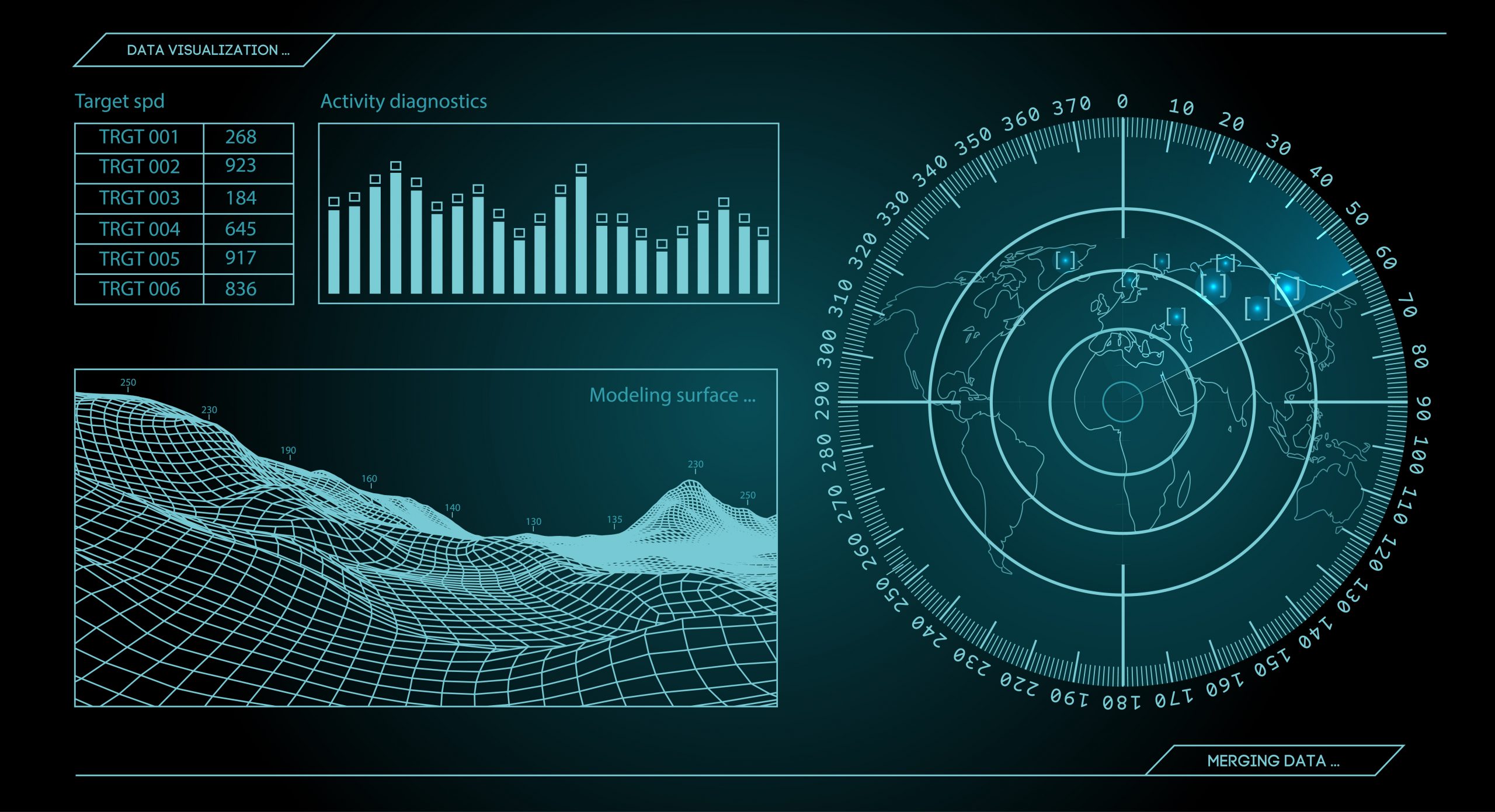
When assessing the warfighting capability of military forces across land, air and sea, it’s not uncommon for an Army, Navy or Air Force to be dealing with thousands of personnel and then thousands of military vehicles, ships and aircraft. Getting a quick picture of how prepared their forces are for a particular mission can mean the intricate piecing together of ‘readiness’ data from many disparate sources of information all housed in stove piped software systems—many of which are significantly outdated! From docker images to dynamic dashboards, Matt Medley, Senior Product Manager, IFS, highlights the five must-haves to transform these streams of information into one infrastructure platform with a single view, to achieve Total Asset Readiness.
For military forces, achieving Total Asset Readiness may sound like a simple term. The U.S. Department of Defense defines operational readiness as “the capability of a unit/formation, ship, weapon system, or equipment to perform the missions or functions for which it is organized or designed.” But attaining high availability across all the equipment in an entire defense force is a hugely complex enterprise.
The heavy price of poor readiness
Readiness issues are a constant headache for military forces. In early 2020 the German Army faced ‘groundhog day’, with its armed forces commissioner saying “the defence ministry had failed to significantly improve the combat readiness of Germany’s main weapons systems, such as aircraft, helicopters and ships—a problem that has dogged the Bundeswehr for years.” Even a new generation asset such as the F-35 has its problems. Based on data from fiscal year 2019, the director of the Pentagon’s Operational Test and Evaluation Office said all variants of the aircraft remain “below service expectations”, with a goal set for 65% availability.
Failing to achieve the required level of asset readiness not only means wasted expenditure and personnel time, it can also compromise mission success. Commanders must know exactly what assets are available when planning critical missions—and an inaccurate or partially complete picture is simply not good enough.
The transformational staircase – new procurement and support models deliver improvement
Military asset procurement, sustainment and support has been on an evolutionary path for some years. Gone are the days of the ‘traditional’ model of the military purchasing a complex asset from an original equipment manufacturer (OEM) and then taking on the responsibility of keeping that asset operational during its lifecycle.
The military has taken numerous steps up the ‘transformational staircase’ since this scenario. The first stage of contractor assistance was termed as buying ‘spares and repairs’ from the OEM. Following that, the risk and availability associated with supporting an asset throughout its military lifecycle has increasingly involved industry assistance. The generally accepted model for procuring and supporting military equipment is now on a performance-based logistics (PBL) basis.
Going a step above the transformational staircase – Total Asset Readiness
PBL strategies work well when applied to particular assets, or components of assets such as engines and other complex parts. But these service-based agreements can be taken to another level – what we at IFS deem “Total Asset Readiness” – when it comes to force-wide asset mobilization.
This ‘next evolution’ is geared to putting in place a clear and consistent framework across a military fighting force. Disparate reporting mechanisms and software systems can be consolidated with an all-encompassing solution to track asset readiness—giving commanders a clear real-time view of the assets at their disposal, in the context of the mission they need to complete.
The U.S. Navy is one military organization which is targeting such an approach with its Naval Operational Business Logistics Enterprise (NOBLE) family of systems. The program is reported to allow for the consolidation of over 23 standalone application systems and elimination of over 700 application/database servers—with the ultimate aim to improve material and shore readiness.
Of course, putting in place such an Integrated Data Environment requires close collaboration from military and industry players. But such system implementations must span hundreds of thousands of users and thousands of assets. With this in mind, here are five key areas which must be focused on in order to achieve Total Asset Readiness.
- Get as close to the asset as possible – even in a disconnected environment
According to Deloitte, the rise of Industry 4.0 technologies will have a hugely positive effect on asset readiness—bringing a new approach to availability based on real-world data. The U.S. Navy has adopted a framework to leverage technology such as Artificial Intelligence, Internet of Things, predictive analytics, and blockchain. Meanwhile the USAF has prioritized use of predictive analytics to address a slide in readiness across its fleet of 5,400 aircraft.
IoT-enabled sensors on individual components provide a huge data set on the exact status of a given asset wherever it is—a subsystem such as an aircraft engine can provide terabytes of data in a single flight. By analyzing this data stream with AI/machine learning functionality in enterprise software, real steps can be taken to make the maintenance of connected assets more predictive than ever before. An early example is the work on the F-35 ALIS project, although the software was designed before the first F-35 rolled off the production line, so the capabilities available today can even surpass this.
But these data-producing assets will often be deployed in a disconnected setting, in a hostile environment without forward infrastructure and often with an essential mandate to keep operational security. In this case, software infrastructure must also be configured to support such disconnected operations—that means aggregating, consolidating and storing data and technical records to be sent once connectivity is re-established.
- Remember – the scale is way above normal business levels
When putting together an Integrated Data Environment across an entire fighting force, the scale required is far bigger than even the largest business. A recent report outlined that going from analysis of alternatives for a technology system, defining the requirements, through to initial operational capability typically takes corporate technology companies six to nine months, but takes the DoD an average of 91.
Military deployments can mandate upwards of 100,000 users to have access to at least some elements of a software platform—requiring differing roles and permission sets on a per-user basis. It is this scale and level of security complexity which makes developing, integrating and activating an IT system an extremely difficult task.
This is where strategic use of APIs can help reduce implementation times and link previously unconnected IT systems. We have already discussed the huge amount of newly accessible data generated by military assets, but these streams may have previously been produced in siloes through upwards of 20 disparate systems. An Integrated Data Environment must make strategic use of APIs to make sure data is visible and delivered to the right person at the right time, or it is worthless.
- Apps and Containerization necessary to meet UX, UI expectations
The representation and accessibility of asset data is just as important as accuracy—from two perspectives. Firstly, in an age where military personnel and industry technicians are using intuitive apps in their everyday lives—ease of use by maintenance controllers, commanders, industry experts and other users is vital for any universal software system. Significant importance must be placed on user interface (UI) and user experience (UX) to make sure the system, right down to individual screens for specific task requirements, is usable and streamlined with the end-user in mind.
Secondly, there is so much happening behind the scenes at the back end of such an IT consolidation project—apps are at the heart of this. There are a few layers of technology in the middle of the tech stack which are invisible to the user at the UX level, but drive how software is delivered, particularly in application form.
Meet the docker image
Containerization is key and involves bundling an application together with all of its related configuration files, libraries and dependencies required for it to run in an efficient and bug-free way across different computing environments. A ‘docker image’ can be created to pack up the application and environment required by the application to run. These docker images effectively allow an app to be scaled, reproduced and used on desktops or any mobile devices in a secure manner.
- Security and information assurance paramount
This containerization approach also has benefits from a security standpoint and, as with any military infrastructure deployment, security is top of mind. Military software solutions must be deployed in a secure environment and meet strict regulatory requirements such as International Traffic in Arms Regulations (ITAR), cloud security mandates and the U.S. DoD Cybersecurity Maturity Model Certification (CMMC) Version 1.0.
While we’ve already touched on how managing finely tuned permission sets and roles becomes increasingly more critical as an organization scales up its user base, several other considerations also come into play. For example, operational security concerns often mandate strict controls on who within the contractor’s organization and their supply chain have visibility into part and inventory status based on those user roles and permissions.
Furthermore, electronic signatures are becoming increasingly essential to guarantee full transparency and traceability for audit and investigatory purposes. Clearly, total asset readiness must incorporate these ever-evolving requirements while staying on the leading edge of new and emerging security threats, known and unknown.
- Information insights at your fingertips – the transformation from excel to dynamic dashboards
Snapshot reporting through excel exports are a thing of the past, but highly configurable dynamic dashboards should allow command centers to see exactly what assets are ready across the forces required for their specific mission.
The culmination of a software infrastructure consolidation must translate into something which can give commanders an up-to-date and accurate picture of their asset readiness—usually represented as a force-wide availability percentage. How do you know your assets are available if you can’t represent this data in a dashboard which is configurable to a commander’s needs?
Systems that support RESTful APIs at the back end can knit together information from multiple data streams, allowing personalized information insights to be delivered to commanders. KPIs can be introduced into reporting and tracked in real-time according to the force in question—when it comes to readiness examples, we are talking differing requirements for nuclear forces vs. a non-weapon carrying airlift squadron running C-5 Galaxy aircraft.
Ultimately – asset readiness leads to mission effectiveness
Answering the ultimate question about mission readiness requires getting a total view of asset status. You cannot have a mission without your assets. A commander will be asked by her or his commander whether their assets are available to complete a given mission—the best answer is ‘yes’, the worst is ‘I don’t know’.
With a single software environment in place to measure asset readiness, every commander will know the status of the assets at their disposal. Any unexpected hiccup in mission planning – this aircraft is awaiting a part refit for example – can be easily rectified and factored into the planning procedure. Total Asset Readiness enables defense organizations to perform required tasks and missions on-time, every time, while achieving significant reductions in sustainment costs.










Discussion about this post